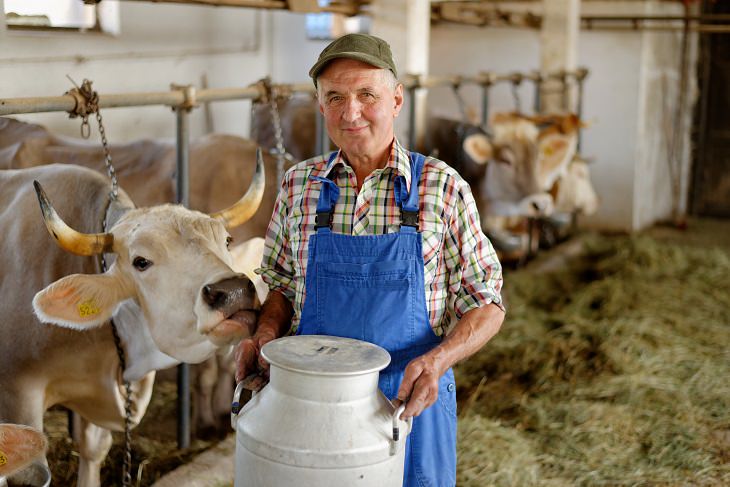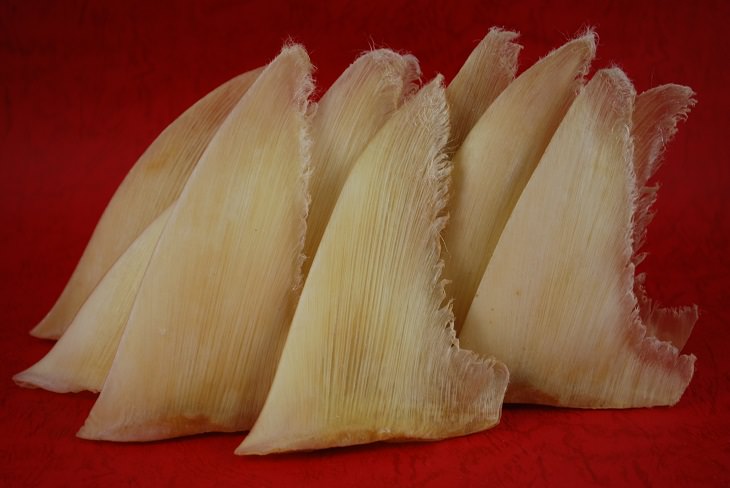
It's currently banned from being imported into the United States. In 1971, the US banned all foods that are made from animal lungs. Scotland has made several attempts to influence the US into lifting the ban, but they’ve come up short each time.
2. Beluga Caviar
The beluga sturgeon is the largest of sturgeons, weighing more than 900 kilograms and measuring more than 4.5 meters long. It can take up to 25 years for the female beluga to mature and produce eggs. Beluga caviar varies in color from light to dark grey and is the largest grain caviar. Their pearls are most sought after and have a mild, buttery taste.
In 2005, the US banned beluga caviar from further import due to overfishing. Americans were consuming about 60% of the world’s beluga caviar, which costs $200 per ounce. In fact, beluga caviar was so desirable that the available stock declined by 90%.
3. Sassafras Oil
Sassafras oil is extracted from the dried root bark of the sassafras tree. This tree stands anywhere from 6-12 meters tall, with slender branches and brown and orange colored bark. The leaves are oval and can grow 8-18 centimeters long, and the flowers are small and of a greenish or yellow color.
Native American tribes use this oil for medicinal purposes, such as helping with acne, fevers, and urinary disorders. Sassafras can also be found in Chinese medications to help treat trauma and rheumatism. The twigs from the plants were once used as toothbrushes, and sassafras was also used as an early anesthetic. Sassafras was found in many distinct food products in the US, and it was known as a key ingredient in many root beers and teas.
However, the FDA now prohibits all sassafras bark, oil, and safrole as flavorings or food additives. This is because sassafras is no longer considered safe for human consumption, as it has been linked to cancer. Also, consuming too much sassafras can lead to poisoning.

Unpasteurized milk, or raw milk, is milk that comes directly from an animal’s udder and hasn’t been heat-treated to kill any bacteria. Raw milk carries a higher chance of being contaminated with harmful bacteria that cause foodborne illnesses than pasteurized milk. Children are at a higher risk of these diseases because their immune systems have not yet fully developed.
The FDA banned the interstate sale or distribution of unpasteurized milk in the US, but states are able to adopt their own laws on the sale of raw milk. Drinking and consuming unpasteurized milk is legal in all 50 states, but 20 states prohibit the sale of raw milk. Thirteen states allow unpasteurized milk to be sold in retail stores, and 17 allow the sale of raw milk only on the farm where it was produced.
5. Ortolan
This is a tiny songbird that weighs less than an ounce. It was once a controversial meal in France and is cooked for 8 minutes and served with the head still attached. The bird is meant to be eaten whole, including the bones and head.
Killing and selling the ortolan was banned in France in the 1990s, but poachers continued to catch the small bunting and sell it to local restaurants. France’s league for the protection of Birds claimed that the ortolan population dropped 30% even after the ban, forcing the government to enact more stringent enforcement in 2007.
The killing of these rare birds is less controversial than the barbaric way in which they are killed. These birds are trapped during their migratory season and kept in covered cages. They prefer to eat at night, so the covered cages encourage them to gorge on grain, to the point where their bodies double in size. It’s said that ancient emperors would pluck out the birds’ eyes, tricking them into thinking it was night so they’d eat more. The ortolans are eventually thrown alive into a vat of Armagnac, which both drowns and marinates them.
France now strictly prohibits the killing of ortolans. The killing, cooking, or smuggling of the bird anywhere in the European Union or the United States is a criminal offense.
6. Casu Marzu
Casu marzu, which translates into English as “rotten cheese.” This Sardinian cheese is typically soaked in brine, smoked, and left to ripen in a cheese cellar. Then cheese makers leave it outside uncovered, allowing cheesing flies to lay eggs inside it.
The eggs hatch into maggots, which start feeding on the cheese. They produce enzymes that promote fermentation and cause fats within the cheese to decompose. The cheese turns soft and leaves a burn on the tongue when eaten. Sardinians say that the cheese is only good when the maggots are still moving. If they are dead, then the cheese has gone bad and is too toxic for consumption.
Casu marzu is not in compliance with European Union hygienic standards and has been declared illegal. It’s illegal in the United States because it’s unpasteurized and has more than six mites per square inch.

Shark finning was declared as an illegal act by the United States. Finning, the act of cutting off a shark’s fin, is one of the biggest threats that sharks face. After a shark has been finned, it’s thrown back into the sea, where it may drown, bleed to death, or get eaten by other predators.
There’s a large market for shark fins in order to make shark fin soup, which is a popular dish in Asia. Shark fins can be found in food stores, fishing villages, and pharmacies throughout Asia. The demand for shark fins has led to sharks being targeted solely for their fins, but don’t expect to try that soup in the US anytime soon.
8. Ackee fruit
Ackee may look like a delicious and delightful fruit, but one must be careful before eating it. If eaten too soon, it can cause vomiting or even lead to a coma or death. In Jamaica, the harmful effects of this fruit are known as Jamaican vomiting sickness.
The ackee fruit’s productive pod turns red and naturally opens, revealing the edible portion, which is the yellow arilli that surround the toxic black seeds. The FDA banned all ackee from America, but later allowed the sales of frozen or canned ackee. The import of fresh ackee is still banned.
9. Mirabelle Plum
The Mirabelle plum is known for its sweet and full flavor and it’s often used in fruit preserves and dessert pies. The fruit is mostly found in France, where 70% of the world’s Mirabelle production occur.
The production of the Mirabelle plum has been supported since 1996 by a Protected Geographical Indication to help guarantee its authenticity. Its protective origin designations make it extremely difficult to get into the US.
10. Kinder Surprise Chocolate Eggs
This candy is popular across the world, but not in the United States. The Kinder Surprise Egg is a hollow chocolate egg that holds a plastic capsule which contains a toy. The toy is usually a simple collectible, like a small bike or miniature beach bucket and pail.
These eggs have always been illegal in the United States. A 1938 regulation made it illegal to sell any candy that contains a non-nutritive object. Despite efforts to import the chocolate egg into the US, the federal government has continued its ban and recalled the item every time it was introduced.
If you haven’t been lucky enough to try one yet, don’t worry, because Kinder just revealed this May that they’ll be selling a similar chocolate egg in the US market.
The new egg separates the toy from the chocolate as it’s comprised of two sealed halves. Therefore, it will meet FDA regulations and is compliant with the Consumer Product Safety Commission.
Source: listverse
Images: depositphotos